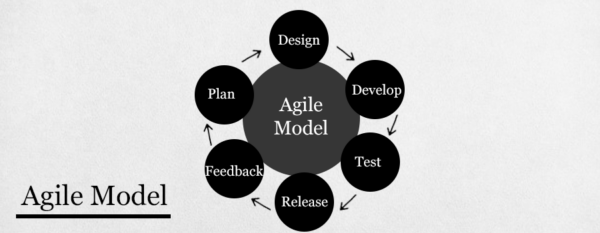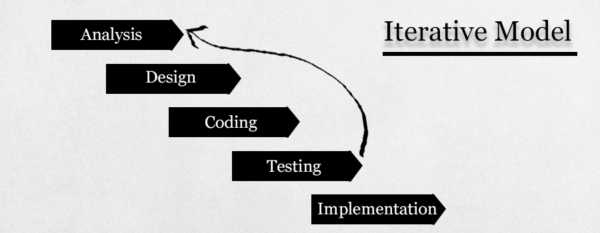Software testing is an essential component of the software development process. There are numerous software development models available today, each with its own set of advantages and disadvantages. As a result, you must select the appropriate model based on the project’s requirements and challenges. Let’s have a look at several software testing methodologies and their benefits and drawbacks.
Types of Software Testing Models
The following is a list of software testing models:
- Waterfall Model
- V Model
- Agile Model
- Spiral Model
- Iterative Model
Let’s take a closer look at each one!
Waterfall Model
The “Waterfall Model” approach divides the entire software development process into discrete pieces. The output of one phase is used as the input for the next stage in the sequence in this paradigm. The waterfall paradigm has four steps: gathering and analyzing requirements, software design, programming implementation, testing, and maintenance.
The requirement collecting and analysis step of this paradigm entails monitoring and establishing all possible system demands in order to create a specific piece of software. This, in turn, is based on the software requirement specification, which contains detailed information on end-user preferences. The Requirement Specification is also created here.
The paper is being developed as a source of information for the following phase, software design. Keep in mind that you won’t be able to adjust the prerequisites once you’ve progressed to the following phase. As a result, the end-user specifications must be highly specific.

Advantages
- Simple to set up and manage.
- The requirement collection and analysis step helps to save time during the development phase.
- The resources required are minimal, and testing is completed once each phase is completed.
Disadvantages
- User requirements cannot be changed or updated.
- Once you’ve entered the next phase, you can’t go back and change anything.
- You can’t move on to the next phase until the previous one is finished.
V Model
The V Model is far more flexible than the waterfall model. Downhill and uphill patterns are used in this paradigm for development and testing. It also permits concurrent development and testing. In this strategy, testing begins with individual units and advances to system integration.

Advantages
- Because testing processes such as planning and test design are completed before coding, it is straightforward to employ.
- This model improves the success rate while also saving time.
- Because the majority of flaws are detected early on, the downward bug flow is avoided.
Disadvantages
- It’s a strict model.
- Because the software is still being developed during the implementation phase, no initial prototypes of the product are available.
- If anything changes in the middle, you’ll need to update the test document.
Agile Model
Requirements and solutions are produced under the Agile model through collaboration across several cross-functional teams. Iterative and incremental models are other terms for the agile model. By delivering a working software product quickly and breaking the product down into small incremental builds, the agile software testing methodology focuses on process flexibility and customer satisfaction.

Advantages
- Client satisfaction is ensured by the rapid and continuous development of deliverables.
- Because consumers, developers, and testers are in regular touch, the concept is adaptable.
- You’ll be able to create functional software fast and adapt to changing requirements.
Disadvantages
- Estimating the work required at the start of the cycle in large and complex software development circumstances can be difficult.
- If the customer is unsure about the goal, the project may go off track due to continual communication.
Spiral Model
This software testing model is essentially identical to the Agile model, although it emphasizes risk analysis more. The spiral model comprises four phases: planning, risk analysis, engineering, and evaluation. In this paradigm, you must first gather requirements and conduct a risk assessment at the base level before proceeding to the next spiral chevalier.

Advantages
- It is suitable for large and complex systems.
- Depending on the changing circumstances, you can add real-time functionality.
- Early in the cycle, the software is created.
Disadvantages
- It’s a costly model that necessitates a high level of risk analysis expertise.
- It is not appropriate for tiny or simple projects.
Iterative Model
Before beginning a project, the Iterative model does not require a lengthy list of requirements. In this paradigm, the development process starts with the functional part’s needs, which can later be expanded. The procedure is repeated for each cycle, producing new product versions. Every iteration entails the creation of a new system component to complement the previously produced functionality.

Advantages
- Because high-risk tasks are finished first, risk management is simple.
- The progression is clearly visible.
- In succeeding sprints, problems and threats detected in one iteration can be avoided.
Disadvantages
- The iterative model necessitates more resources than the waterfall methodology.
- The procedure is difficult to control.
- The hazards may not be totally determined even at the end of the project.
Check out all the software testing webinars and eBooks here on EuroSTARHuddle.com
